從事紀錄片工作十多年來,如果問林木材,把紀錄片從生活中抽掉,最想做什麼?「我好像還沒有看紀錄片看到煩的時候欸……」他笑著說起自己曾經嘗試做過一種系譜表,將紀錄片分成不同派別,標示每個國家的重要作者與作品,後來因為太過龐雜而放棄,想通了以後,覺得還是用腦袋記起來就好。對於上面那個問題,雖然林木材沒有給出正面答覆,但他的確還有觀察塗鴉、看科幻片等嗜好,有時候他也觀察科幻片裡廢墟牆上的塗鴉。「嗯,就是到處走走、看看。」把生活當作一部大型的紀錄片,林木材的其他興趣其實好像還是沒有脫出紀錄片的範疇。
「一開始我只是想寫影評,於是把能找到的相關文章都看了,發現有些人會將影評寫得很困難。當時的我認為這個文體應該要更通俗一點,就取了一個最簡單的筆名(木材)來符合文章調性:內容紮實,又要容易被閱讀。」身為一位電影文字工作者,林木材用這個名字從事紀錄片推廣工作多年,現為台灣國際紀錄片影展(Taiwan International Documentary Festival, TIDF)策展人。平時嚴肅的表情可能讓人誤認為難以親近,談起自己的工作與經歷,卻又在認真中顯出「促咪」的一面。
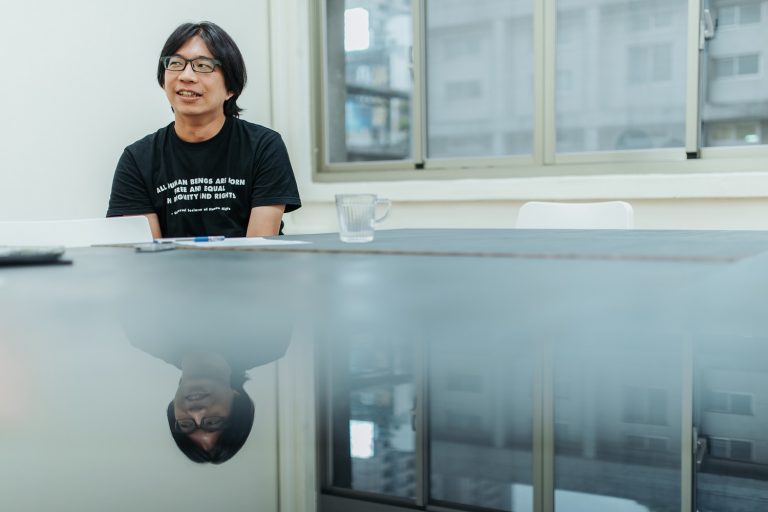 身為一位電影文字工作者,林木材用這個筆名從事紀錄片推廣工作多年。圖/林科呈攝影
身為一位電影文字工作者,林木材用這個筆名從事紀錄片推廣工作多年。圖/林科呈攝影
「我覺得紀錄片顛覆思考的能力很強大,具有啟發性,即使相對屬於小眾,卻值得投入。」早在國立臺南藝術大學音像管理研究所念書的時期,林木材就選擇了紀錄片領域作為志業,朝著評論和推廣的方向前進。初時單靠文字難以維生,讓他不得不多方摸索,有什麼機會就做什麼事,在採訪撰稿、舉辦活動的各式經驗累積下,最初想成為職業影評人的目標也有所轉變。退伍後他來到臺北,有一陣子只想把看片和寫文章兩件事情做好,勤跑試片活動之後,卻發現自己並不喜歡社交的場合,於是漸漸避而遠之。「以市場而言,劇情片與紀錄片的生態差別在於,前者的商業價值高於文化價值,後者則是稍微顛倒過來的。看紀錄片的時候能夠以文化價值為優先衡量標準,寫東西就不需要去顧慮那麼多。」
這些書寫軌跡大多都收錄在林木材的部落格裡,內容除了影評和產業觀察,也有長年於紀錄片領域耕耘,深入映演現場的第一手報導。近年來,由於作為策展人須維持中立身分,加上工作繁忙導致時間與心力有限,他的文章逐漸轉為受邀撰稿居多,主題上也比較需要有所選擇,但並沒有停止動筆。
「我最大的興趣還是在編輯跟寫作。」擔任TIDF策展人期間,林木材會參與幾乎所有的編務,舉凡影展手冊到特刊,甚至百餘部的影片介紹也是發給辦公室內的團隊分工,最終再由他審稿修改。「如果沒寫到我要的東西,有時候可能會把稿子改到原作者都認不出來。反正我是辦公室裡文字的最後一關,幾乎所有要發出去的中文字都會看過。」此外,身兼《紀工報》(Taiwan Documentary E-Paper)的主編,他也會和執行編輯討論每一期的主題,以電子報的形式出刊。2019年,《紀工報》就以「焦點影片」的方式,找來不同世代的五位作者,一同書寫吳耀東導演的《Goodnight & Goodbye》與傅榆導演的《我們的青春,在台灣》。從影評人轉換到策展人,即使在形式上有所變更,林木材對文字的熱忱仍然得以維繫。
說起林木材與影展工作的淵源,時間得回溯到2008年。那時他受邀至臺北忠孝新生附近的「倉庫藝文空間」,策劃每週一次的紀錄片常態放映,由於希望導演也可以到現場和觀眾交流,所以大部分選映的是臺灣紀錄片。「一開始沒有薪水,後來申請補助後,就有了一些錢。因為我需要負責影展所有的事情,所以會清楚各個職位的工作,只是規模比較迷你。」他回憶道,實際上影展團隊只有一到兩個人,現場執行才會另外請人協助。活動也就在編制緊縮的情況下,一路辦到2012年,總計放映了一百多場電影。
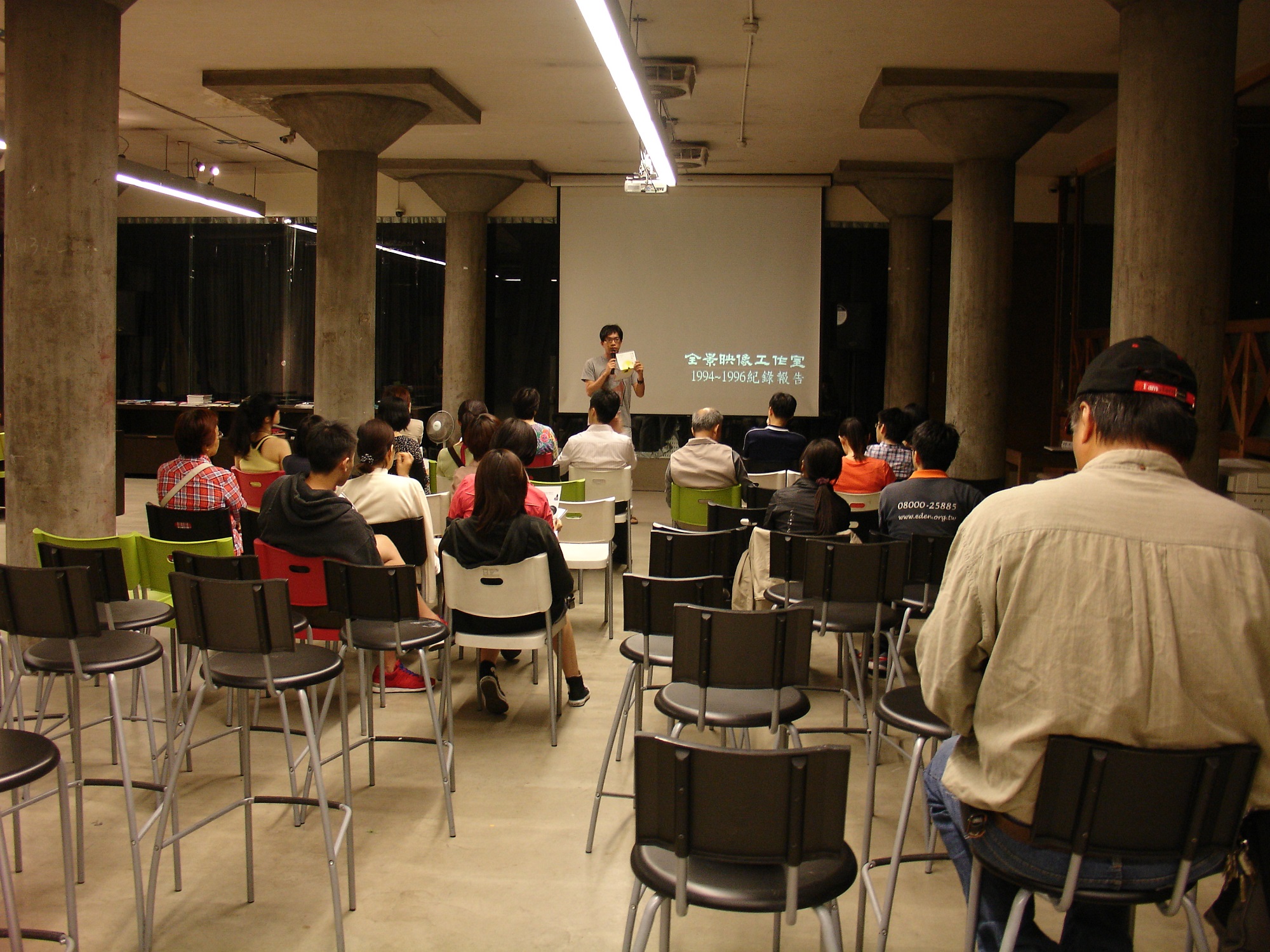
林木材第一次進入大型影展工作,則是在2010年的TIDF擔任節目總監,負責節目的架構、選片和競賽。2012年他離開了一屆,2013年文化部正式將TIDF委由國家電影中心籌辦,過去缺乏固定執行單位的TIDF有了常設辦公室,資源得以累積,他也被找回去當策展人。「以策展的角度而言,內容規劃上還蠻自由的。可能有個關鍵的問題是,臺灣沒有太多人在耕耘紀錄片這塊領域,所以假設要策劃一位國際上相對冷門的導演專題,那麼諮詢委員們也很難給出意見。」林木材解釋道,TIDF雖以紀錄片為主題,實際上也包含了各種類型的影片。相較於西方有許多大型影展,東方則少有活動可以大量放映亞洲作品,因此在影展定位上,希望讓比較新奇、生猛的獨立創作也能夠有交流的平台。
「TIDF的名稱中有紀錄片,但我們一直試著容納更多不同的媒材與多元的作品進來,在影展內去挑戰紀錄片。已經有前提的話,你的內容就是挑戰這個前提;如果有觀眾感到困惑前來詢問,就解釋給他聽。」秉持著年輕化、多元化的原則,TIDF持續發展與推廣紀錄片作品,為了打開更多想像空間,林木材與團隊也持續走訪國際影展,吸納養分做為參考對象。「有一年我在全世界最大的阿姆斯特丹國際紀錄片電影節(International Documentary Film Festival Amsterdam,IDFA),有個關於互動式影像的『Doc Lab』單元,請到一位想展現其心目中『互動影像』的藝術家。他先是向觀眾宣告自己要做行為藝術表演,接著吞下一個小小的藍芽視訊球,我們就透過影像和聲音直接觀察到他的身體內部,而且具有真正的即時性。」
這樣的啟發也體現在TIDF每一次的嘗試之中,好比2010年曾與吳俊輝導演合作,請到五位亞洲藝術家進行「現場電影」(Live Cinema)的演出;同年的焦點影人是來自菲律賓的導演奇拉.塔西米克(Kidlat Tahimik),他會在影片結束前上台跳傳統舞蹈,與自己的影像產生互動。
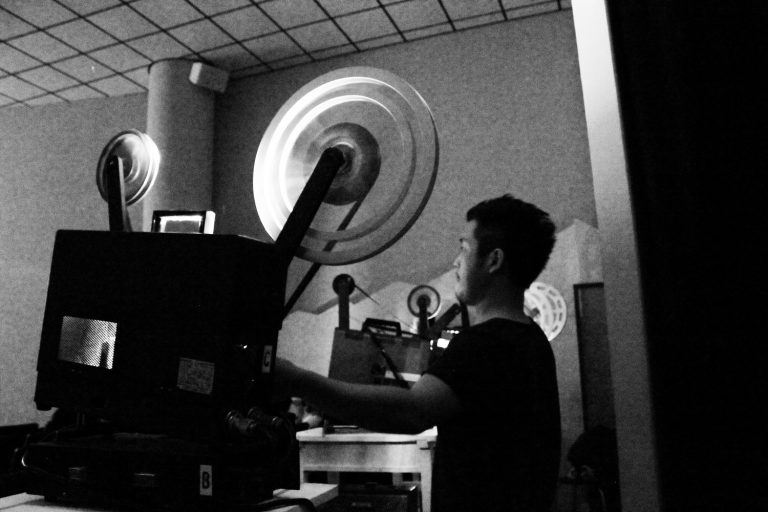 TIDF在2010年曾與吳俊輝導演合作,請到五位亞洲藝術家進行「現場電影」(Live Cinema)的演出。圖/林木材提供
TIDF在2010年曾與吳俊輝導演合作,請到五位亞洲藝術家進行「現場電影」(Live Cinema)的演出。圖/林木材提供
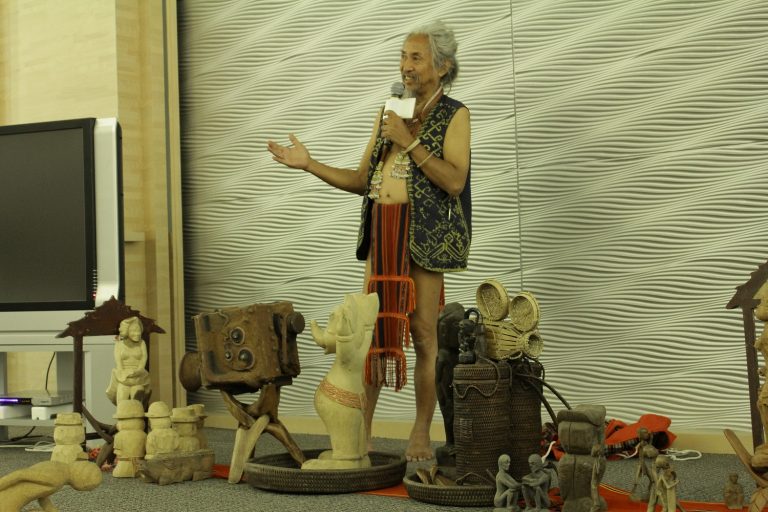 2010年TIDF的焦點影人菲律賓導演奇拉.塔西米克(Kidlat Tahimik)上台跳傳統舞蹈,與自己的影像互動。圖/林木材提供
2010年TIDF的焦點影人菲律賓導演奇拉.塔西米克(Kidlat Tahimik)上台跳傳統舞蹈,與自己的影像互動。圖/林木材提供
「大部分影展的工作人員就是循環在不同的影展之間,不同影展的辦公室通常是同一批人,重複率高。」林木材認為,這可能是預算結構的問題,因為影展的工作期大概是短暫的幾個月,之後沒有經費續聘,所以大家也都習慣活動結束就再去接下一個影展。但由於TIDF是雙年展,間隔斷層較久,尋找工作夥伴又更是問題,一年後同樣的人可能已經去別的地方上班了,就只好再找新的人進來。
除此之外,雖然有文化部提供的預算,TIDF仍有資金缺口的壓力,團隊選擇自籌經費以換取自由度,同時也尋求贊助商或異業合作的機會。相較於臺灣其他大型影展,TIDF可以動用的資源較少,也一直都在宣傳上遭遇困境,一方面缺乏預算下廣告,一方面也是因為紀錄片的受眾取向較為固定,即使近年觀眾的年輕族群有所成長,宣傳仍舊難以在主流媒體發揮效用。現行制度下採用的辦法,是透過非政府組織的串聯合作,從學校或藝術單位去推廣,試圖觸及更多的潛在觀眾。
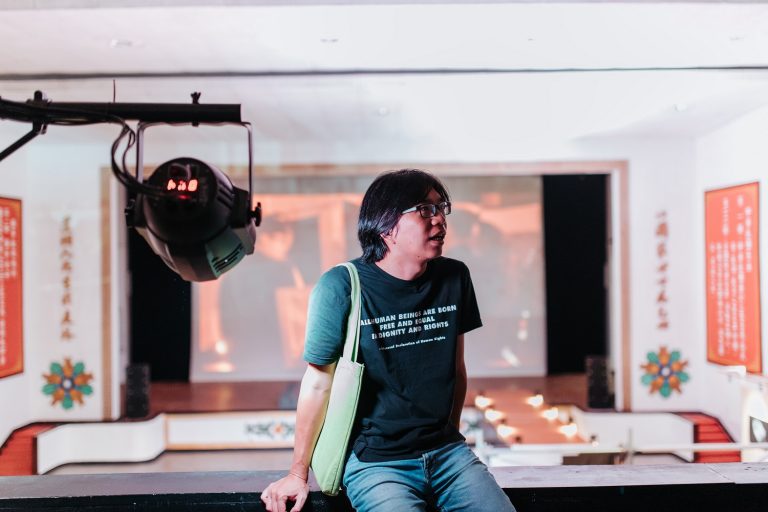 林木材在受訪過程中談論臺灣紀錄片工作者的困境。圖/林科呈攝影
林木材在受訪過程中談論臺灣紀錄片工作者的困境。圖/林科呈攝影
對於臺灣紀錄片工作者的創作處境,林木材也以具指標性的紀錄片製播平台公共電視「紀錄觀點」的補助制度為例,分享他的觀察和想法。「基本上,電影圈的模式是出錢的人擁有版權,所以如果公視出了一部片全部的錢,那就沒什麼好說的。可是紀錄片比較容易產生爭議,假設預算200萬、時間需要花三年,那創作者會投資很多無形且難以估計的勞力。所以這些抗爭的觀點認為,付出的勞力和時間應該要能換得一點版權,但這實在難以量化,所以也不太會被接受。」
「理想中比較合理的狀況是:一開始兩方在談合作的時候,就先預設整個案子拍到好,包括時間成本換算成金錢的費用。比方說公視出200萬的錢,但創作者認為拍到好應該需要300萬,那如果他個人能吸收掉這多出來的100萬,就應該擁有版權的幾分之幾。」至於創作者必須於一年內完成作品的時限,是否會影響創作自由?林木材則覺得是一個願打,一個願挨。資源確實不夠,但規定如此,如果選擇要申請,就要去拍能夠在時間內完成的題材,在創作者普遍缺乏經費的困境中選擇最適合之道。
有些拿到補助的創作者,最終也會做出不同的影片版本,其中一個自己留存,另一個則交給公視。對於這個補助體制,林木材個人的建議是,如果公視能夠把預算提高到一個更合理的狀態,可能就可以解決這些問題。實際上,經過工會抗議,也的確有成功分配版權的例子,同一部片可以向公視或作者詢問,問哪一方就付給哪一方費用,或者也有提高創作者抽版稅比例的特例。「紀錄片導演維生的方式,通常必須靠作品的販賣跟放映。如果這個版權被電視台拿走,創作者無法自己決定,就會變成一個關乎生存的大問題。」
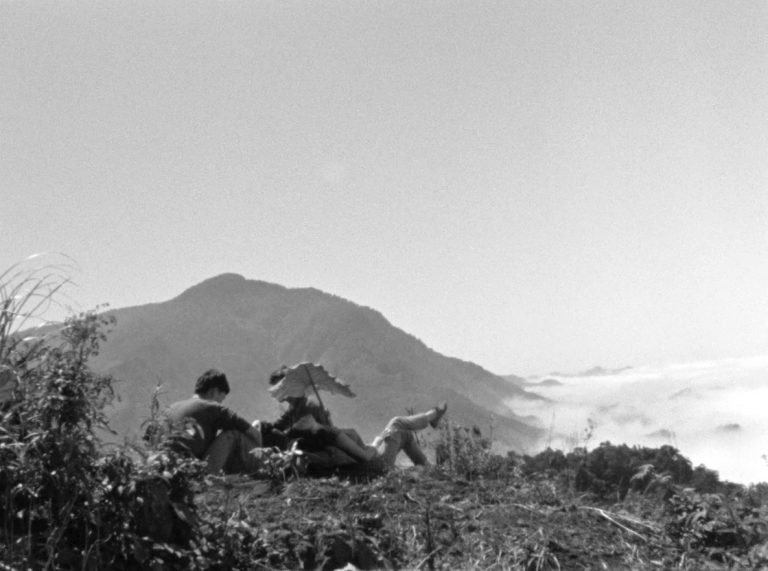 2018年,TIDF策劃了「想像式前衛:1960s的電影實驗」單元,讓包括《上山》等一系列臺灣1960年代的作品重新問世,圖為《上山》劇照。圖/TIDF提供
2018年,TIDF策劃了「想像式前衛:1960s的電影實驗」單元,讓包括《上山》等一系列臺灣1960年代的作品重新問世,圖為《上山》劇照。圖/TIDF提供
2018年,TIDF策劃了「想像式前衛:1960s的電影實驗」單元,林木材與工作團隊依循史料線索多方考古,讓一系列臺灣1960年代的作品重新問世,內容涵蓋紀錄片、劇情片和實驗影像。「紀錄片做久了,角度會變得比較偏門,注意到一些主流容易忽略的地方,就會發現很多東西都被漏掉了。明明曾經出現過,為什麼沒人討論?」談起最初的查訪動機,林木材的聲音帶點理直氣壯,似乎不甘願它們就此在歷史中遭到埋沒。這些另類電影曾在特定的時空背景下微光乍現,如今得以再度被看見,既是電影史的對話與補充,也為當代觀眾提供了另一種觀察視角。他也預告2020年的TIDF將會延續前幾屆的專題,選映臺灣1970到1990年代的紀錄片,談論那些電影史沒講過的東西,請觀眾拭目以待。
也是在2018年,他以策展人身分策劃了「中正之下:當代人權影像展」,選了八位國內外藝術家的作品在中正紀念堂的展館展出,激發關於人權與威權的思辨。在這個策展界線逐漸模糊的時代,文化實驗一直在發生,從紀錄片領域加入當代藝術,策展人的角色會有什麼不一樣嗎?「想像空間會更大一點。前提是不要給出既定的印象,只要把它們放在一起,觀眾就會自己去聯想,很像蒙太奇的概念。」林木材表示,如果一開始就告訴觀眾這是紀錄片展覽,那麼大家會被這個想法所限制,反而會有點無聊,策劃者如果想要做出不同的嘗試,就必須用內容挑戰前提,但如果沒有前提,設定就可以更具多樣性。
 於「中正之下:當代人權影像展」展出的朱駿騰作品《台灣.台灣》。圖/朱駿騰提供
於「中正之下:當代人權影像展」展出的朱駿騰作品《台灣.台灣》。圖/朱駿騰提供
當影像分別在電影院和展覽館的不同場域放映,模式也會有所不同。林木材分享了策展背後的一則趣聞:「中正之下」展出作品之一的朱駿騰《台灣.台灣》,是完成於民國100年的雙頻道錄像,由男女演員分別在中華民國國旗的背景前,以即興方式詮釋他們所認知的「臺灣」,一鏡到底拍了100分鐘。展覽方本來因為片長太長而要求更動,但林木材認為在錄像作品的觀看之中,影片長短對觀眾而言道理相同,所以也不想為此要求藝術家把作品改短。後來他跟作者討論出的方法是將作品切成三個段落,中間插入一秒鐘的黑幕和分段說明,仍舊以不影響內容的輪播形式展出。
「我跟當代藝術圈的朋友聊過,他們認為辦影展很不容易,我反而會覺得當代藝術展更困難!兩者的差異性還是蠻大的。」話雖如此,當問及之後是否對錄像藝術的策展有興趣,林木材還是表示肯定。他說,正因為在TIDF不只會接觸到傳統意義上的電影,同時也包含了表演、展覽等等多元面向的專題,才能夠對其他範疇的東西不那麼陌生,而這些跨界的經驗最終也都回到了紀錄片領域,帶來雙向的影響。